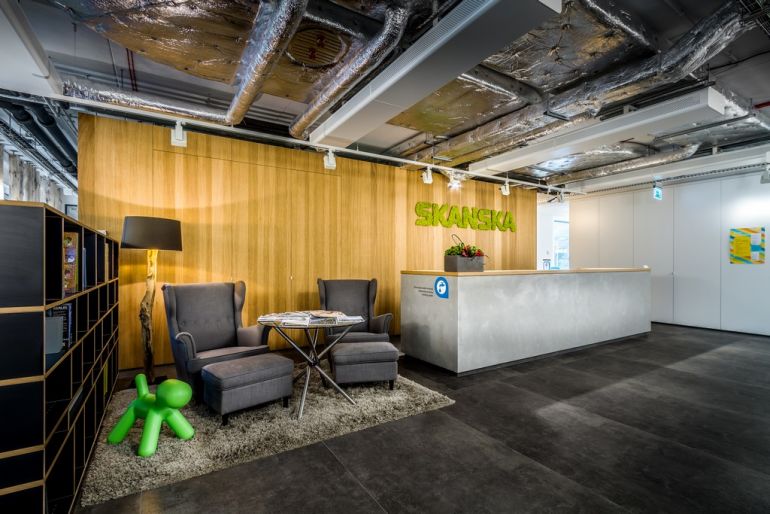Activity Based Workplace idea envisages open space for employees who do not have to perform all their tasks always in the same place any more – at their desk and computer. The area of offices is divided into different spheres of activity adjusted to various needs – individual work in silence and concentration or loud brain storm.
The conception of mobile workplaces was fully realized in the office of Skanska company in Warsaw Atrium 1 building. Its users start each day with eating breakfast together in a modern kitchen and then they start performing their tasks which may be done in a freely chosen place in the office.
Such arrangement of the office was a kind of a revolution for us. Before the planning of the area, some research had been conducted – a specialized Workplace Solutions company has been observing for several weeks our every-day activities, our paths, where we like working the most, how much time we spend on individual work or meetings. The new office was supposed to provide a maximal comfort by adjusting it to the character of our work. However, we had to break our habit of sitting at own desk, but it turned out that actually we did it very rarely anyway – comments Katarzyna Zawodna, chairman in Skanska Property Poland.
Research conducted by Workplace Solutions company turned out to be consistent with results of The International Facility Management Association poll and proved that in the office there are never all employees at the same time. The creation of offices which are „free for everyone” allowed to limit the number of permanent worksites and intend the saved area for other functions.
See also: Address-free offices – a new trend in organization of office space
Currently, 80 people work in Warsaw Skanska office on Activity Based Workplace terms whereas in Stockholm – there are over 1000 employees.
For silence, storm and relax
The newly arranged Skanska office offers places for different kinds of activities. Thinking about concentration, the area for work in silence was arranged with the largest number of desks – 50 and workplaces intended for standing work, with the regulation of height. Moreover, loud talks with business partners may be held in so called telephone booths with the space of 3,5 sq. m. Workers may sit in them comfortably with a laptop and close themselves for a longer conversation. Teleconferences or official meetings, in turn, may be organized in eight meeting halls with different sizes.
The silent and formal part passes smoothly into a dozen or so islands intended for casual meetings and it belongs to a creative space. It is the place where, for instance, project meetings or brain storms take place. When we need a break, we go to a relax zone – we can plan table football or on a console and we use a fitness room. On Fridays, we participate in an office Pilates. Thanks to that, we are a better integrated team – says Katarzyna Zawodna.
Office benefits
Benefits resulting from such organization of an office space were presented by managers of the electronic equipment’s producer, Plantronics company[1]. The decrease in the amount of conference halls from eighteen to five, the creation of concentration places, group work as well as individual and informal meetings reduced absences in the office from 12, 7 per cent to 3,5 per cent. The satisfaction related to a work place, in turn, increased by nearly 25 per cent – till 85 per cent.
It is too early for our effectiveness research – these are usually performed 4-6 months after removal but satisfaction of the board was noticeable „with the naked eye”. Our office makes impression on clients and actually it was our aim – we wanted to express our company philosophy through this arrangement, in which the people and their needs are in the center. We could have limited the area, but we wanted to give it to the team. We also advise the same our clients – they will gain loyalty and gratitude of employees and it will translate into some real effects – comments Katarzyna Zawodna.
Will Activity Based Workplace conception achieve success on the market?
Companies follow trends and they are interested in application of at least part of those solutions – each of them should be adjusted to work in a certain organization in a given industry. They want to react on changing work styles, correspond to needs of new generations and create areas which integrate the whole team. We should remember that soon a new Z generation will appear – and it means five generations for some companies in one office – explains Katarzyna Zawodna.





